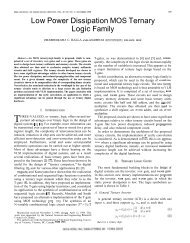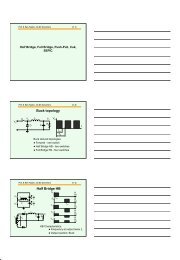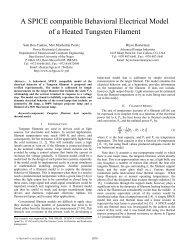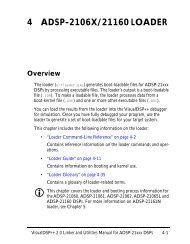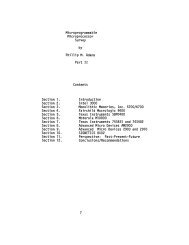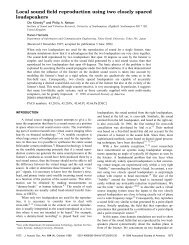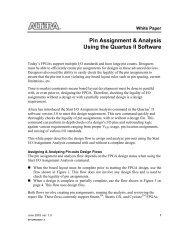Six-Level Single-Leg Flying Capacitor Converter Voltage Balancing ...
Six-Level Single-Leg Flying Capacitor Converter Voltage Balancing ...
Six-Level Single-Leg Flying Capacitor Converter Voltage Balancing ...
You also want an ePaper? Increase the reach of your titles
YUMPU automatically turns print PDFs into web optimized ePapers that Google loves.
Using "on average" derivatives approximation<br />
di i(<br />
t + TPWM<br />
) − i(<br />
t)<br />
dv v(<br />
t + TPWM<br />
) − v(<br />
t)<br />
≈ ; ≈<br />
, (15)<br />
dt T<br />
dt T<br />
PWM<br />
PWM<br />
from (12) the FC converter “averaged” voltage balancing<br />
dynamics continuous time model in the form of differential<br />
equation becomes<br />
dX 1<br />
1<br />
= ( A(<br />
D)<br />
− I ) X + B(<br />
D)<br />
VDC<br />
/ 2 . (16)<br />
dt T<br />
T<br />
PWM<br />
PWM<br />
An accurate solution and switched simulation will show five<br />
times switching frequency ripples in load current and capacitor<br />
voltages that are filtered out in the averaged models (12), (16).<br />
FC converter averaged voltage balancing dynamics analysis<br />
methodology [9-11] comprises the following steps. First, we<br />
obtain the characteristic polynomial of matrix A(D) (13)<br />
5 4 3 2<br />
P ( λ ) = λ + b λ + b λ + b λ + b λ + b . (17)<br />
4<br />
3<br />
2<br />
As the matrix A(D) is about multiplying 10 5x5 matrices,<br />
this could hardly be done manually and requires an assistance<br />
of some symbolic calculations tool.<br />
Second, each coefficient of (17) is expanded into power<br />
series of a small parameter (multiplied by some function of D)<br />
β ω<br />
, (18)<br />
T<br />
= 1 PWM<br />
4L / R as well though, most likely, this is not a practical<br />
FC converter case.<br />
The selection of the series expansion maximum power for<br />
the coefficients (17) is dictated by the accuracy considerations<br />
for the polynomial roots with a modulus close to unity.<br />
Third, the roots of (17) with the series expanded coefficients<br />
are found analytically in the form of series expansion. For the<br />
small parameter approximation (18), it may be shown that<br />
there is always one real root and two pairs of complex<br />
conjugate roots.<br />
The above calculations must be performed on separate for<br />
3/5



